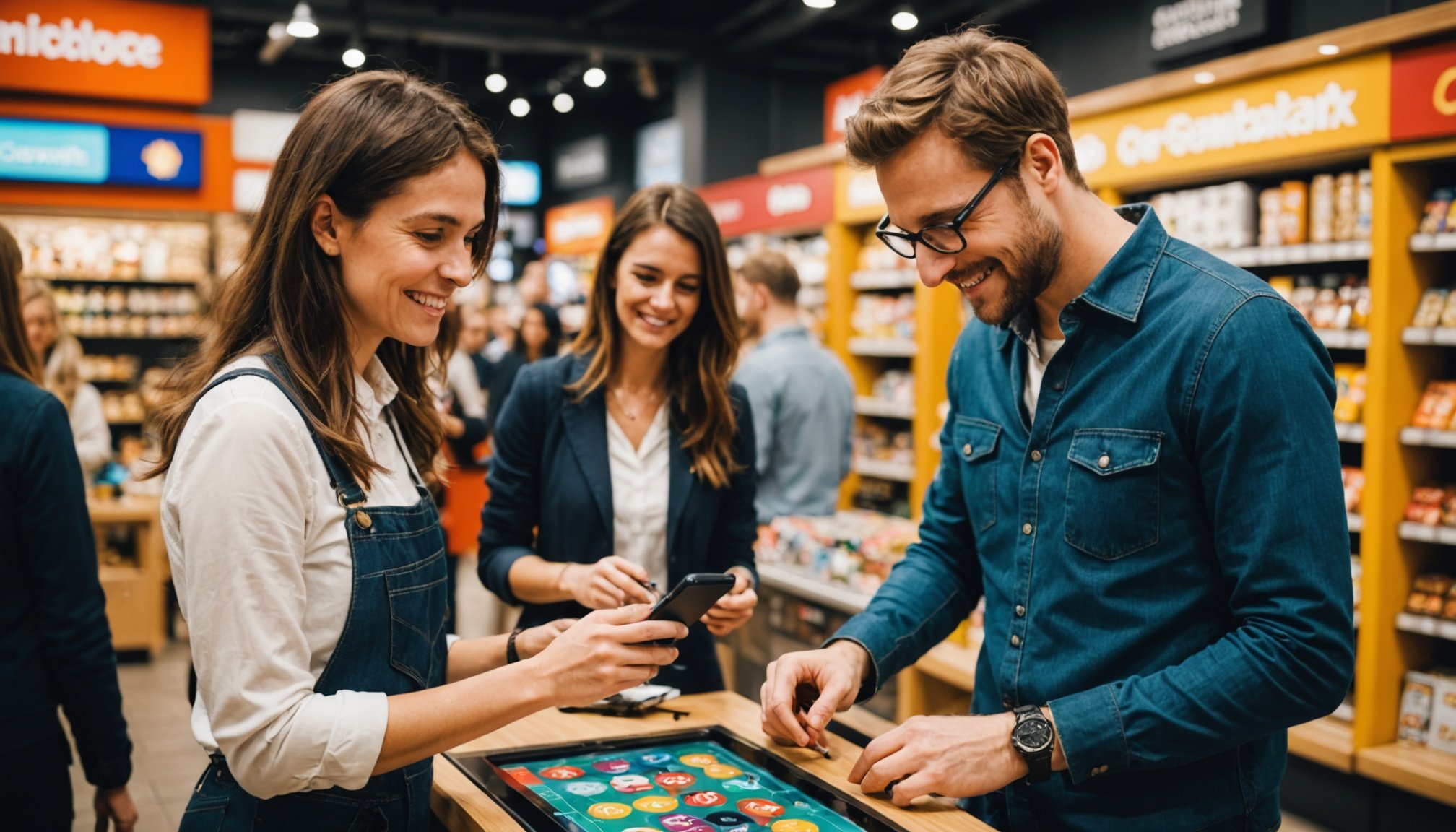Understanding Gamification in Retail
Gamification involves integrating game-like elements into non-game contexts, such as retail, to enhance customer engagement. In the retail sector, this often means using strategies that make shopping more interactive and rewarding for customers. Techniques like points, badges, or reward systems are commonly employed to encourage customers to interact more frequently and intensively with brands, thus building customer loyalty.
Gamification Principles in Retail
At the core of gamification is engagement. Retailers utilise game mechanics to create a sense of achievement and motivation. For instance, customers might earn points for each purchase, which can be redeemed for discounts or products. This not only boosts engagement but also creates a psychological link between the brand and the customer, fostering long-term loyalty.
In the same genre : Transforming Shopper Security: Cutting-Edge Contactless Retail Solutions for UK Stores
Current Trends in UK’s Retail Sector
In the UK, retailers are increasingly adopting gamification to drive customer engagement. Many are developing mobile apps featuring game-like experiences. Such apps often include challenges and competitions, encouraging users to engage with the brand regularly. Moreover, retail giants are integrating augmented reality features to make the experience even more immersive.
Benefits of these strategies are clear: they provide retailers with valuable data on consumer behaviour while creating a fun, engaging shopping experience for customers. Gamification in retail is thus a powerful tool, both enhancing customer satisfaction and driving sales.
Also read : Elevate your project with vam® oil gas connection solutions
Innovative Gamification Techniques for Customer Loyalty
In the modern retail landscape, gamification strategies have become a pivotal tool for enhancing customer loyalty. Retailers are increasingly adopting these engaging techniques to not only attract but also retain a dedicated customer base. With the help of game-like elements, businesses can transform mundane shopping experiences into exciting adventures.
Popular gamification techniques include reward points systems, where customers earn points for purchases or specific actions. These points can later be redeemed for discounts or products, thus incentivizing repeat purchases. Another engaging method is the use of interactive challenges or contests, which foster a sense of competition among customers, prompting them to engage more frequently with the brand.
Case studies from UK retailers have highlighted the success of such customer loyalty techniques. For instance, a prominent chain implemented personalized quizzes that recommended products based on customer preferences, resulting in significant increases in both engagement and sales.
The benefits of personalized gamification strategies are manifold. They cater to diverse demographics, ensuring that the customer experience is tailored to individual preferences. This personalization not only enhances customer satisfaction but also builds a stronger emotional connection to the brand, fostering long-term loyalty. Through these innovative methods, retailers can effectively differentiate themselves in a competitive marketplace.
Steps to Implement Gamification in Retail
Implementing gamification strategies in retail involves critical phases to ensure success. Firstly, define clear objectives for the gamified experience by identifying key goals such as increasing customer engagement or enhancing brand loyalty. This pivotal step guides the next steps and ensures alignment with business aspirations.
Once the objectives are well-defined, the selection of appropriate gamification tools is crucial. Several platforms, such as game-based marketing software or customer loyalty applications, can enhance the retail experience. These tools offer features like point systems, challenges, and leaderboards, encouraging customer interaction.
Retail innovation thrives with the use of platforms like Bunchball or Badgeville that provide versatile options for creating interactive retail hubs. These tools facilitate seamless integration by aligning with existing digital infrastructure, ensuring no disruption in customer experience.
Best practices play a significant role in the smooth implementation of gamification. To avoid pitfalls, retailers should prioritize user experience by maintaining an easy-to-navigate interface. Align gamified elements with customer preferences to foster sustained engagement.
It is also essential to train staff on the new systems, ensuring they can assist and encourage customers in this enhanced interactive environment. By focusing on these key phases, implementation strategies become more effective and lead to successful gamification in retail.
Measuring the Effectiveness of Gamification in Retail
To truly understand how gamification impacts retail, it’s vital to focus on performance metrics. These metrics reveal how well gamified initiatives resonate with customers. Key indicators might include customer engagement levels, sales increases, or improvements in customer retention rates. By closely monitoring these metrics, retailers can determine the success of their gamification strategies.
Gathering Customer Feedback
Customer feedback is essential in evaluating gamification success. Surveys, feedback forms, and online reviews can provide valuable insights into how customers perceive and interact with gamified experiences. These insights help identify areas of improvement and maintain a dialogue with customers, ensuring the gamification efforts are meeting their expectations and needs.
Analyzing Data for Strategy Improvement
Analytics in retail play a crucial role in fine-tuning gamification tactics. Retailers should analyze collected data to uncover patterns and trends related to gamified experiences. This involves looking at data concerning user engagement, completion rates of gamified tasks, and customer satisfaction levels. By understanding these metrics, businesses can iterate on their strategies, making improvements that enhance the user experience and ultimately drive more sales and loyalty through well-crafted gamified interactions.
Psychological Insights into Gamification and Customer Engagement
Understanding the link between gamification and customer engagement requires delving into the realm of customer psychology and behavioral science. At its core, gamification taps into principles like rewards, competition, and community to heighten engagement levels.
Behavioural science reveals that people are inherently driven by rewards. Introducing game-like elements such as points, badges, and leaderboards can significantly enhance engagement levels by triggering the brain’s reward centres. This method capitalises on intrinsic motivators, encouraging consumers to participate actively and frequently.
Another crucial factor is the influence of competition on customer psychology. Competition stimulates engagement by appealing to individuals’ natural desire to surpass peers or achieve personal bests. When customers engage in friendly contests or work towards communal goals, their loyalty to a brand strengthens.
Furthermore, emotional engagement plays a vital role in successful gamification. Establishing an emotional connection fosters a sense of belonging and purpose. Initiatives that effectively integrate emotions can transform customers into enthusiastic participants, leading to substantial gains in customer engagement.
These psychological insights highlight that the true power of gamification lies in its ability to harness complex emotional and behavioral triggers. By leveraging such principles, companies can create a robust framework that enhances loyalty and community rapport, ensuring long-term success.











